


Part of the reason we take our (or at least, the US's) technological superiority for granted, when it comes to military gear, is aircraft carriers. The US has 10 proper ones, 9 sort-of ones, and everyone else has, well, they do their best. Now China is starting to do better.
Though China launched its much-ballyhooed Type 001A aircraft carrier just a few months ago, the People's Liberation Army Navy is hardly resting on its laurels, instead making steady progress on technology for its second home-built carrier, the Type 002.
The Type 002 carrier, development for which is slated to wrap in 2020 or 2021, will be a 70,000-ton aircraft carrier with catapults designed to launch heavier aircraft.
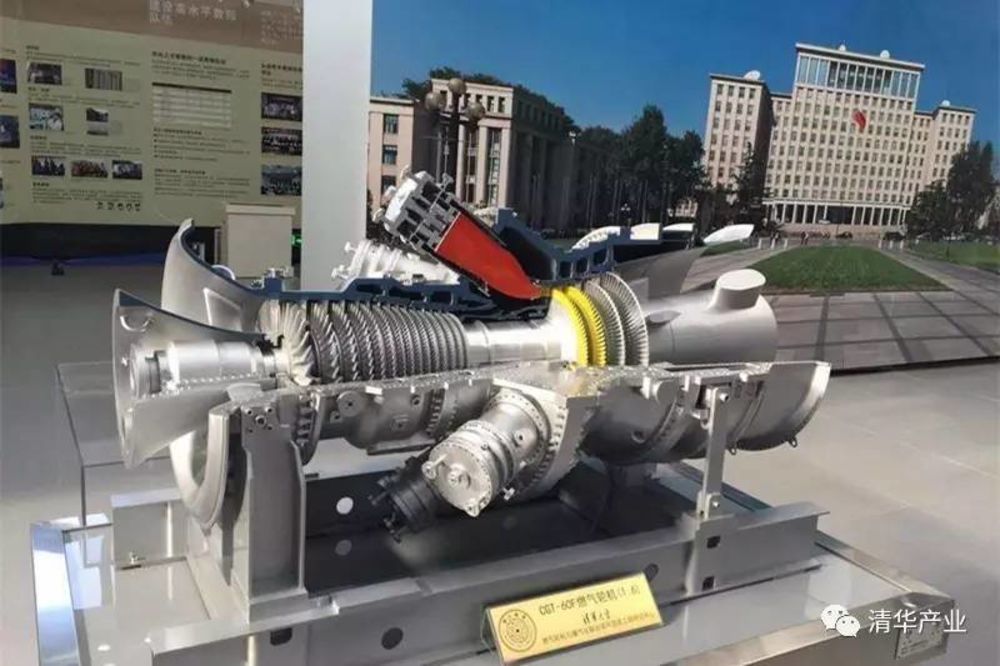
CGT-60F
And giant catapults aren't the only new tech in development. Pictured above, the CGT-60F is a heavy duty, F-class gas turbine (which typically have a power output of 170-230 megawatts) designed by Tsinghua University's Gas Turbine Research Center with the Dongfang Electric Group and Shanghai Electric Group. It's completely domestic design that exceeded expectations for cooling and temperature distribution—vital factors for large turbines. As such, the state-run China Daily suggested that the CGT-60F would be a suitable candidate to power a large warship, such as an aircraft carrier.
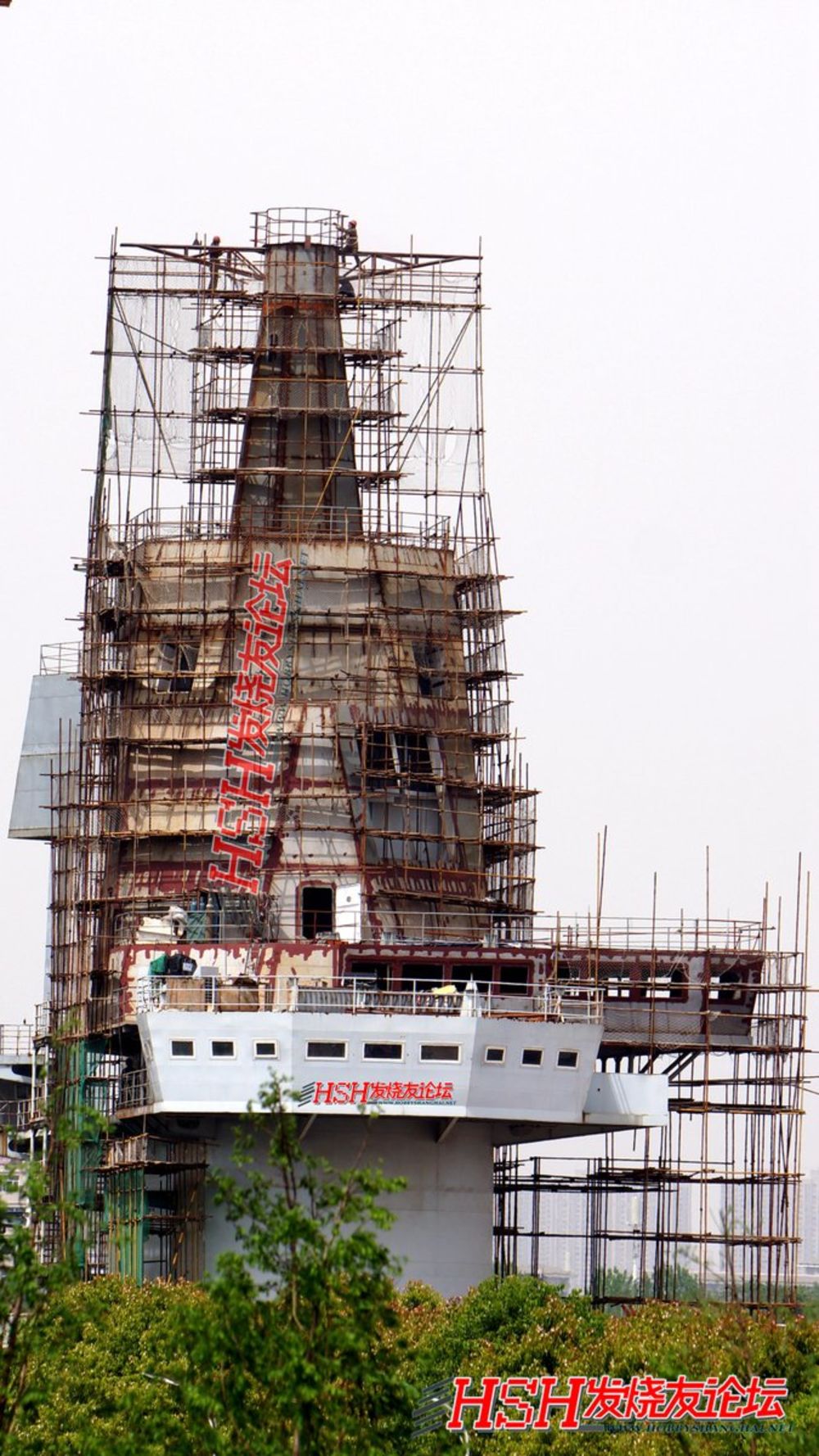
Type 002 Wuhan
The carrier mockup at Wuhan, used for testing shipboard electronic systems like radars and comms, has been modified with multiple AESA radars.
Da Feng Cao
Additionally, the aircraft carrier mockup at Wuhan (which also hosted the electromagnetic test rig for the Type 055 destroyer) is modifying its island to include new electronic systems.
Previously modeled after the Liaoning's older island, the changes include the installation of an additional bridge deck, and new, flat paneled Type 346x series AESA radars—just like the Type 001A carrier, but with smaller AESA radars above the Type 346s.
The Type 002's island would likely have a similar multi-paneled radar system found on the Type 055 DDG's integrated mast. Those smaller AESA radars could be used for targeting and fire control, allowing the Type 002 to datalink with missiles launched from aircraft and other ships, extending their range.
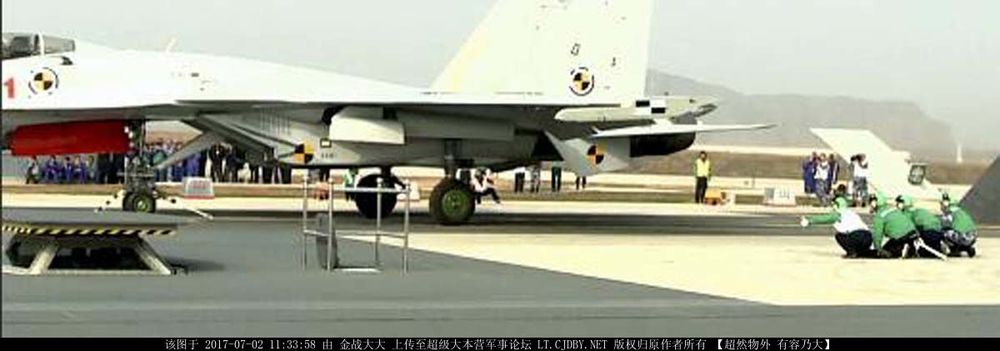
J-15B
The J-15B, seen on a catapult prior to launch at the Huangdicun naval air base in Liaoning. The Huangdicun base is testing both steam and EMALS catapults for installation on the Type 002 aircraft carrier.
Chinese Internet
China has also continued catapult testing at the Huangdicun. Obsessives may recall that earlier this summer, China launched the catapult-capable J-15T from the land-based electromagnetic aircraft launch system (EMALS), as well as debuted new steam catapults.
By putting both the J-15T and catapult through extensive testing, the pilots and aircrew of the Type 002 carrier will be able to move quickly toward complex operations when launched. What's more, a J-15 (serial number "111") was spotted in early July 2017 with a inflight refueling pod, slung under the fuselage centerline, between the engine nacelles. This kind of refueling would expand the range and flight times of current fighters.
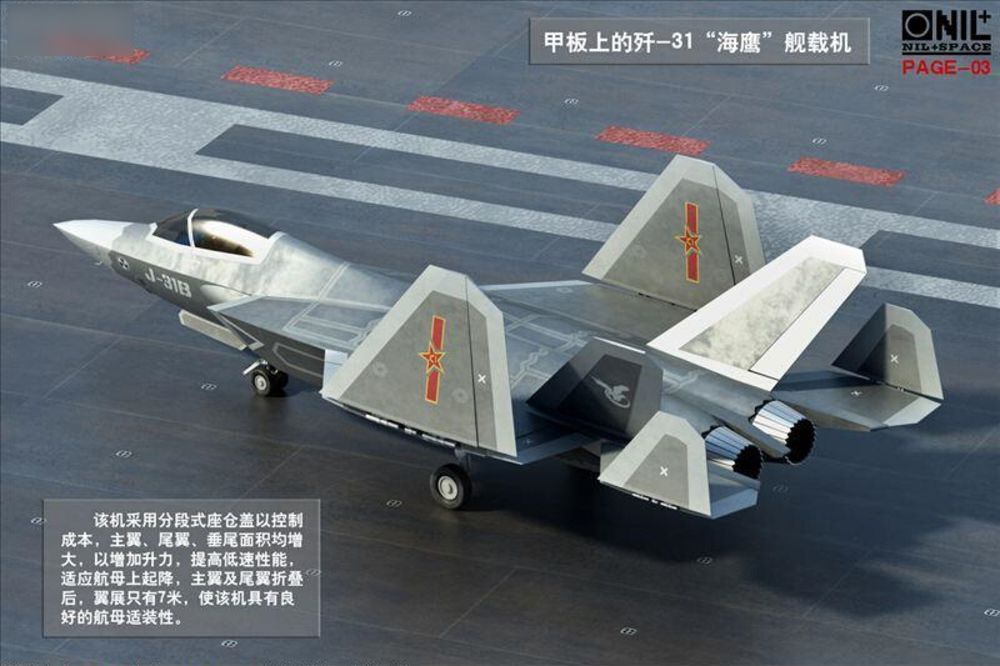
Gyrfalcon
The Shenyang "Gyrfalcon" J-31 stealth fighter, China's second stealth fighter program, is reported to have a possible carrier capable configuration, with folding wings and reinforced landing gear.
O+Nil
Additionally, the second prototype J-31 stealth fighter has made additional flights this summer, the most recent on July 25. This burst of activity gives credence to reports that Shenyang Aircraft Corporation, the J-31's builders, is planning to create a third J-31 prototype with the capability to operate on catapult-equipped aircraft carriers.
The J-31, while smaller than the J-20 stealth fighter, has improved stealth and avionics capability on its second prototype. Plus, production versions are planned to be equipped with faster WS-17 engines, which could allow for supersonic flight without fuel-thirsty afterburners. Those putative J-31 fighters could prove to be stiff competitors in air combat with F-35C fighters of the U.S. Navy.
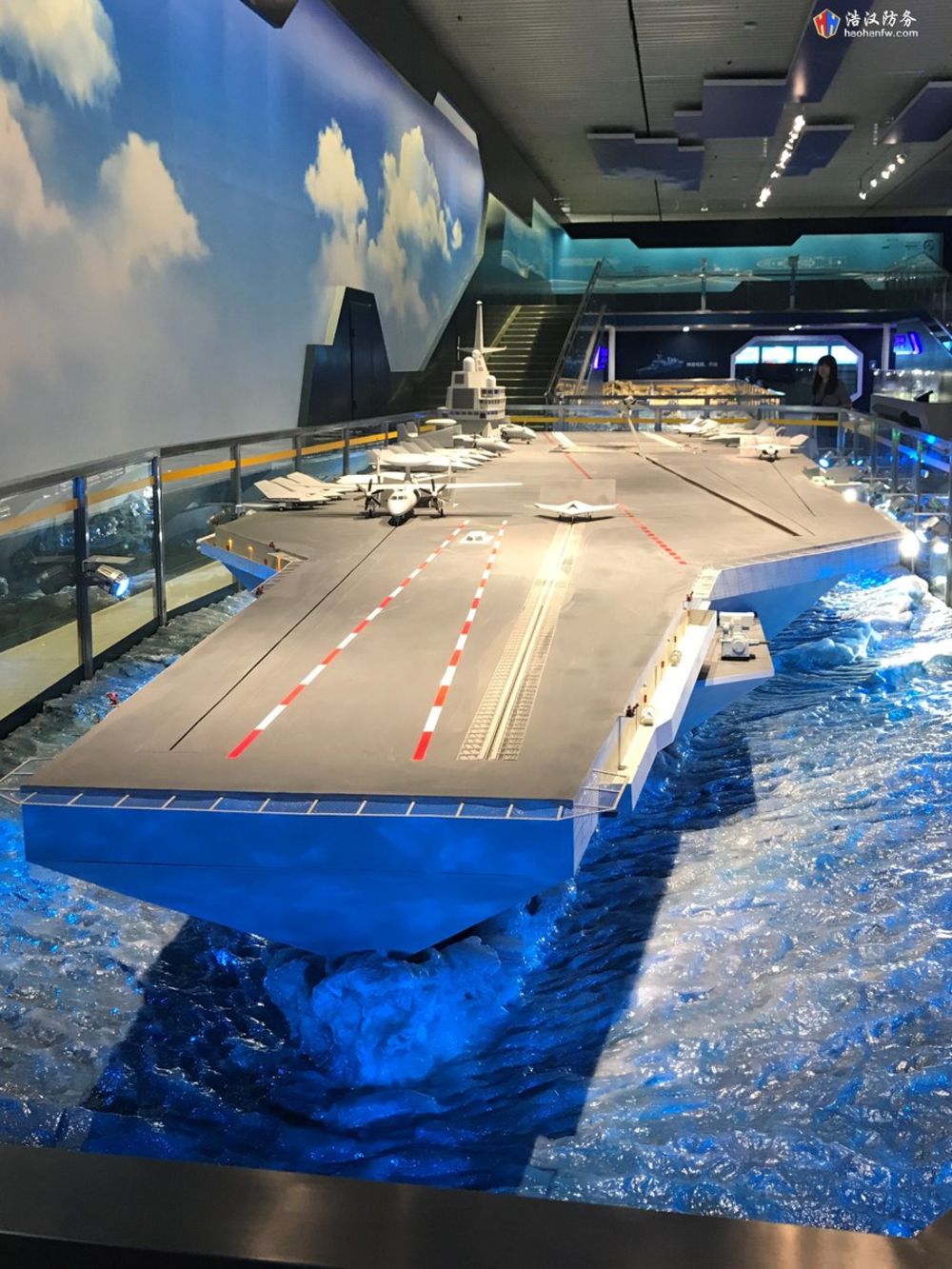
Type 003
This display at the Military Museum of the Chinese People's Revolution looks even further into the future. Here you can spot speculative features like catapults, J-20 fighters, and stealthy unmanned combat aerial vehicles (UCAVs). The nuclear-powered Type 003 supercarrier likely won't enter service until after 2030.
Oedo Soldier
Looking beyond the Type 002, the Type 003 aircraft carrier could be a true supercarrier, with nuclear power and a 90,000-ton displacement. If official displays in China's military museum are any indication, the Type 003 would come with futuristic aircraft like stealthy drone bombers and sixth-generation fighters. It could also have enough electricity to power Chinese lasers and railguns currently under development.

EDITOR'S PICKS







